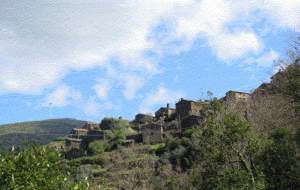Aldeias do Xisto (Schist Villages), a project that started in 2000, nowadays involves 27 villages and five of them are in Lousã. This network, in collaboration with local partners like the Association Baldios of Lousã, develops rural tourism, in that area, and the connection with nature.

Talasnal Schist Village
The main goals of the project are based on a simple idea: to preserve and renew the traditions, promote and make them sustainable, bringing a new dynamic to tourism, through the use of nature and human resources. The reconstruction of the villages is thought in order to reduce the impact done to the environment, using traditional methods and respecting the original architecture.
Talasnal is one of the preserved villages in Lousã’s mountain and is also a meeting point for several pedestrian pathways.
Some of these are organized and planned by the Association Baldios of Lousã, which is responsible for the management and protection of the forest heritage, being truly involved with Environmental Education and Rural Tourism. To make these pedestrian tracks, the collaboration of Lousã’s firefighters corporation was an essential part, so to clean and resort to schist infrastructures, built during the past two hundred years and abandoned until then. These marked paths through the mountain allow walkers to be in direct contact with nature and to have a more concrete knowledge regarding biodiversity. The Lousã mountain has different types of habitats and rich flora and fauna communities. During pedestrian walks, whether walkers are quiet and discreet, they might be able to observe animals such as the golden-striped salamander (Chioglossa lusitanica), the european rabbit (Oryctolagus cuniculus), the wild boar (Sus scrofa) and the red deer (Cervus elaphus). However, regarding flora, all that amblers need is to look around them. Endemic species such as Quercus robur are starting to disappear due to the massive presence of invasive species like Acacia dealbata, commonly known as Mimosa. Nevertheless, in this area, there have been identified twelve different species of ferns such as Osmunda regalis.
Besides plants, several species of mushrooms can also be observed during the walks, being one of them Astraeus hygrometricus.
According to Joel Fernandes, Tourism Technician related to the Aldeias do Xisto network, the main objective of it is “not only to rebuild, but also to give life” to the schist villages. This is possible without the cooperation of local partners like with Baldios of Lousã, assuring and enforcing the bound between population and nature.
Group 4: Marcos Panayiotou; Marina Panagiotou; Pedro Gonçalves; Joana Pedro




You must be logged in to post a comment.